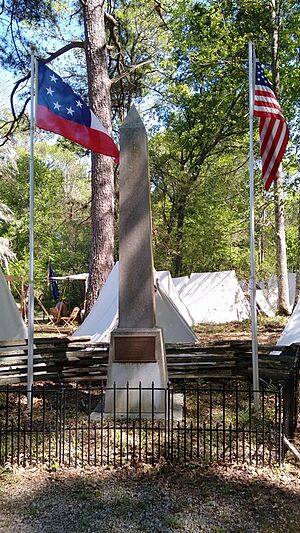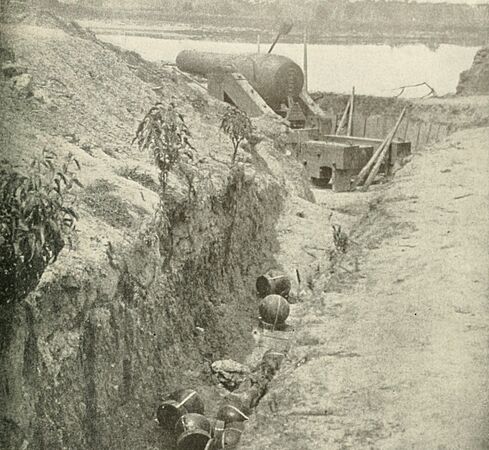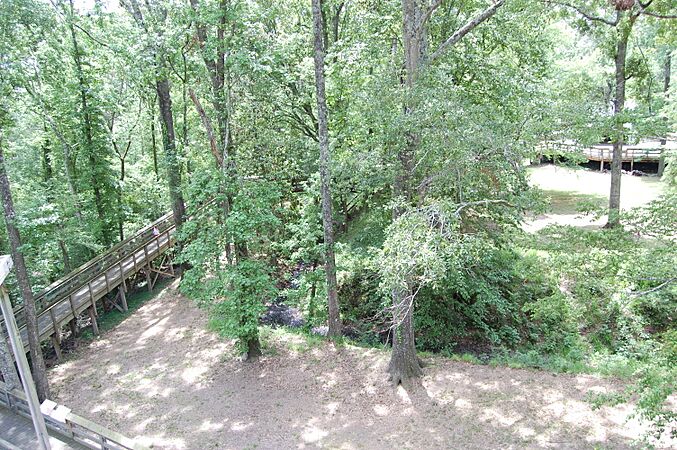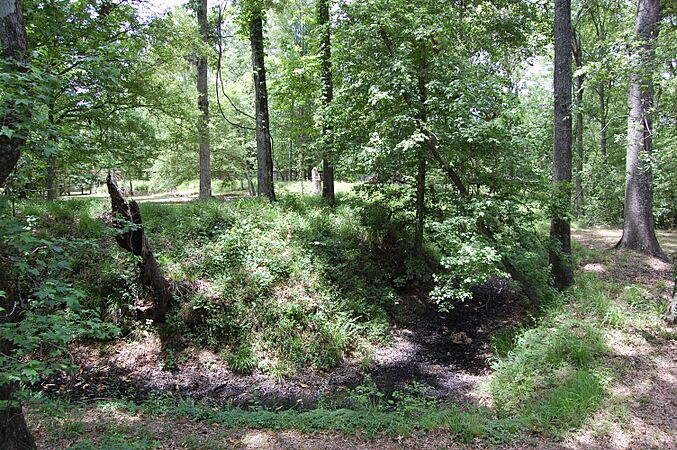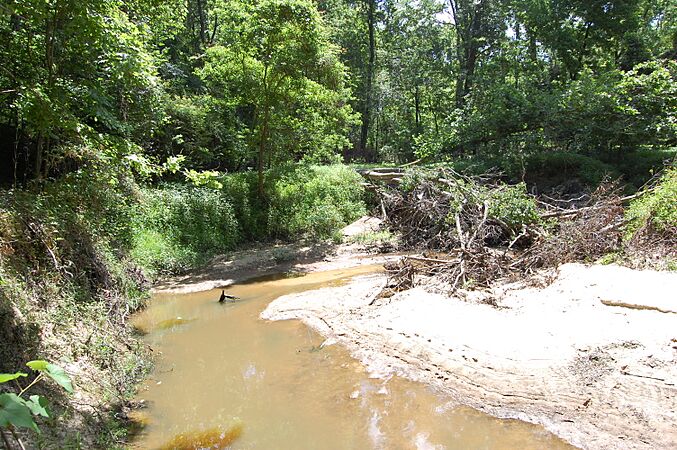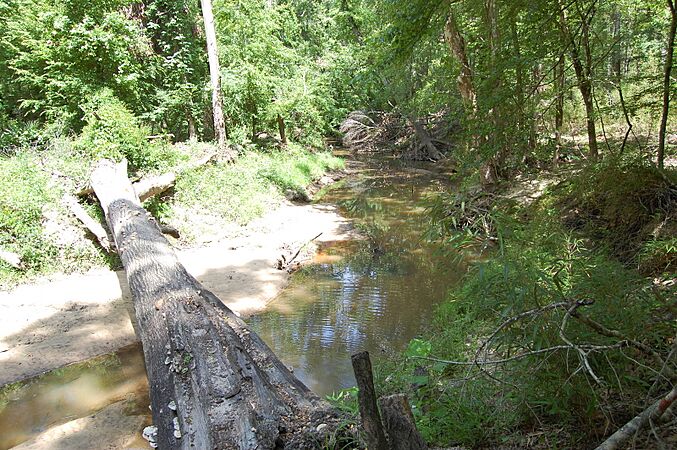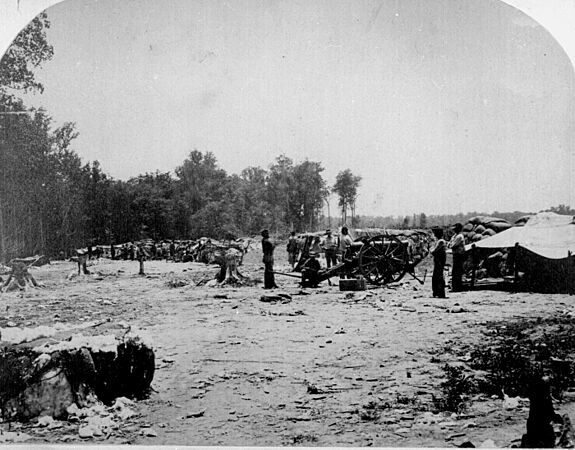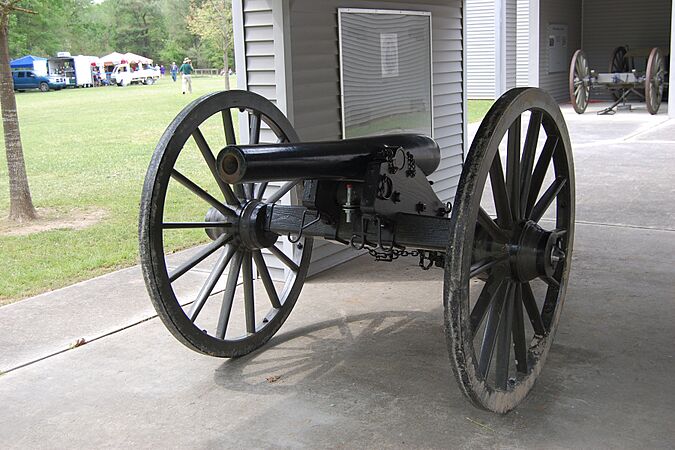Port Hudson State Historic Site facts for kids
Quick facts for kids Port Hudson State Historic Site |
|
|---|---|
| Location | East Feliciana Parish, Louisiana |
| Nearest city | Jackson, Louisiana |
| Governing body | Louisiana Department of Culture, Recreation, and Tourism; Office of State Parks |
|
Port Hudson
|
|
| Lua error in Module:Location_map at line 420: attempt to index field 'wikibase' (a nil value). | |
| NRHP reference No. | 74002349 |
| Significant dates | |
| Added to NRHP | May 30, 1974 |
| Designated NHL | May 30, 1974 |
The Port Hudson State Historic Site is a special place in Louisiana. It is located near the Mississippi River, north of Baton Rouge. This site protects parts of the old forts and battlefields from the American Civil War.
This area was once the scene of the longest siege in American history. A siege is when an army surrounds a place to cut off supplies and force a surrender. This one lasted from May 23 to July 9, 1863. Today, you can visit a museum, see old cannons, and explore the earthworks (dirt walls for defense). The site also hosts Historical reenactments, where people dress up and act out parts of the battle.
Port Hudson is very important because it was the first place where African-American soldiers fought for the Union Army. They even had African-American leaders in the field. Because of its history, it was named a National Historic Landmark in 1974.
Contents
Exploring the Historic Site
The Port Hudson State Historic Site is found north of the town of Port Hudson. It sits on a high area of land, about 65 to 80 feet (20 to 24 meters) above nearby creeks. This made it a great spot for defense during the war.
The land here is hilly and steep. This natural landscape helped the soldiers who were defending the area. You can still see where the Union Army dug their positions. The Confederate soldiers also had strong defenses nearby. These positions were just a small part of the huge battle lines that surrounded the entire community.
A large area of 256 acres (about 1 square kilometer) was added to the site later. This helps protect more of the historic battlefield.
The Siege of Port Hudson
The Siege of Port Hudson was a big part of the Union Army's plan to control the entire Mississippi River. Controlling the river was key to winning the Civil War. The siege began on May 22, 1863, and ended on July 9, 1863.
Major General Nathaniel Prentice Banks led the Union forces. The Confederate General Franklin Gardner finally surrendered. He gave up after learning that another important Confederate city, Vicksburg, Mississippi, had fallen to the Union Army.
African-American Soldiers in Battle
During the siege, General Banks ordered two units of African-American soldiers to attack Confederate positions. These were the 1st and 3rd Louisiana Native Guards. This was a very important moment. Many people in the Union Army wondered how these units would perform. They were among the first to have African-American leaders in battle.
The soldiers fought bravely. They got within 50 feet (15 meters) of the Confederate cannons three times. Even though they were pushed back, they showed great courage. The overall attack plan did not work well, partly because it was not organized enough. These brave units suffered many losses, but they stayed on the battlefield until they were told to retreat.
Honoring the Soldiers
In 1997, a special ceremony was held to honor all the soldiers who died at Port Hudson. People dressed as Civil War soldiers and modern military members took part. They escorted a wooden coffin holding the remains of soldiers from both sides of the war.
After the ceremony, the coffin was buried under a tall stone monument. These remains were found during a study that started in 1987. This study helped confirm that soldiers were buried in the historic cemetery. Buttons found with the remains showed they belonged to both Confederate and Union soldiers.
A plaque on the monument reads:
Port Hudson Peace Monument
Re-Interred May 27, 1997
Two Soldiers
One Federal
One Confederate
Learning from the Past
Students from Louisiana State University have done archaeological studies at Port Hudson. They looked at a Union cannon battery, called Battery 8. Their goal was to find the exact edges of the battery. They also searched for signs of a zigzag trench that Union troops dug towards the Confederate lines.
This project also created a digital map of the area. This map helps park staff compare the land today with old maps from the Civil War. Battery 8 is located in the northeast part of the Union battle lines.
Images for kids
See also
- Siege of Port Hudson
- Port Hudson National Cemetery
- List of Louisiana state historic sites



